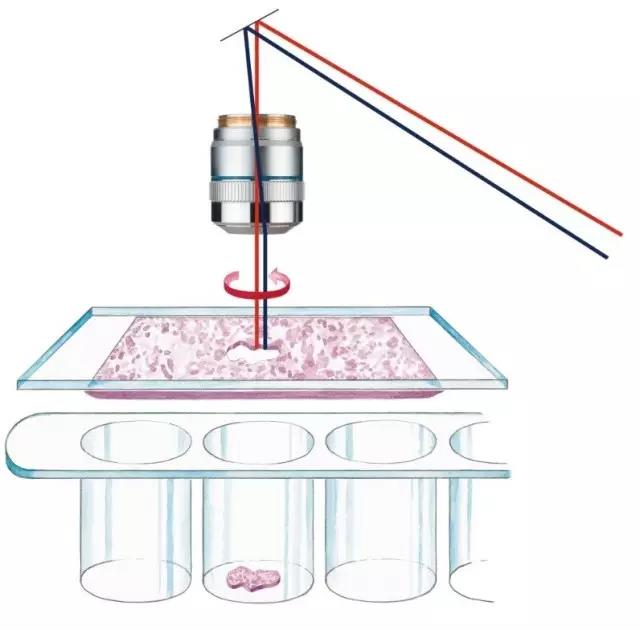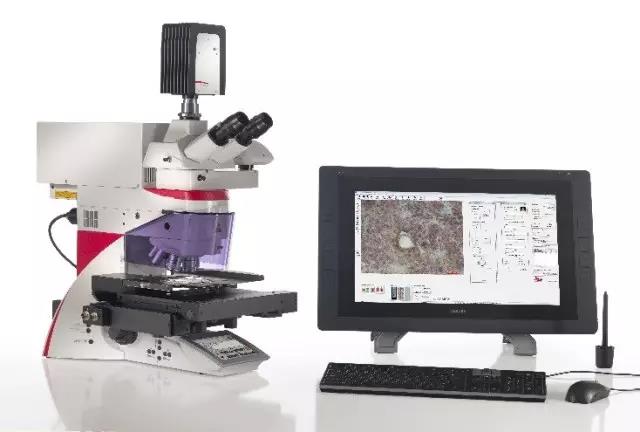Leica Classroom | Which is strong in pharmacy research, Leica cutting helps you
Pancreatic ductal adenocarcinoma (PDAC) is the fourth leading cancer-related cause of cancer, with only 3% of patients with a 5-year survival rate after diagnosis. The cause of such a poor prognosis is mainly due to local high recurrence rates and resistance to multiple factors of treatment.
In pancreatic cancer, 85% of patients are diagnosed with a very high degree of malignancy. The main features are infiltration of the proximal lymph nodes and vascular structures, with metastasis to the liver and peritoneum. Gemcitabine as a drug of choice can produce some clinical effects, but it can only have a limited control of the disease, and only less than 15% of patients do not deteriorate further in the 6 months after diagnosis. Although it has been combined with other ancillary chemicals such as capecitabine and erlotinib, it has had little effect. According to the tests of CONKO-001 and ESPAC-3, gemcitabine can also increase the survival rate of patients with the aid of adjuvants. However, the chemotherapy of the most effective adjuvants is not known. The 5-year survival rate for patients with tumor resection remains between 10% and 20%.
Therefore, it is important to identify factors that affect the efficacy of gemcitabine in pancreatic cancer, which not only maximizes the therapeutic effect, but also avoids useless treatment. Among patients treated with gemcitabine, pharmacological studies have shown a correlation between expression of DNA repair enzymes or polypeptides and nucleotide transporters. However, the genotype or expression level of latent biomarkers among prognostic patients is very small.
Genome-wide analysis revealed that PDAC is caused by mutations in some genes that function through small sequences in the core signaling pathway. This not only helps us explore the pathogenesis, but also suggests that the node of drug-targeted therapy is in the regulation of gene expression.
Recently, microRNA (miRNA), as a factor that negatively regulates genes, plays an important role in gene regulation. It mainly functions by suppressing or directly cleavage of mRNA. MicroRNA can control proliferation, differentiation and apoptosis. Some translocations or deletions of a microRNA gene locus and abnormal expression are common in many tumors, and they can be used as tumor suppressor genes and oncogenes. In addition, some specific microRNAs may affect the treatment of chemotherapy.
The expression profile identified four microRNAs with abnormalities in PDAC, which are miR-155, miR-21, miR-221, and miR-222. Among them, miR-21 is increased in expression in PDAC. miR-21 is associated with the development of ovarian cancer, and it is also thought to play a central role in many solid tumors, such as glioma, biliary epithelial cancer, and breast cancer. This carcinogenic property of miR-21 is further supported by functional studies. If the expression of miR-21 is inhibited, it can reduce the proliferation of many cancer cells, such as breast cancer, liver cancer and PDAC. Conversely, if the precursor of miR-21 is transfected, it will stimulate invasion, exudation and metastasis, such as glioma, colon cancer, breast cancer and PDAC.
These data suggest that miR-21 may be involved in the progression of cancer because it is one of the easiest to detect and one of the largest number of microRNAs. Some studies use it as a biomarker of prognosis. The results of in situ hybridization indicated that overexpression of miR-21 was localized in PDAC cells, indicating a shorter survival rate. However, PCR results of large tumor tissues from 25 patients showed that miR-21 was not associated with clinical pathological findings and was not associated with chemotherapy. Therefore, what we need to do further is to use laser microdissection (LMD) to eliminate the influence of interstitial and avoid sample contamination.
Recently, studies have also reported that miR-21 is associated with resistance to anticancer drugs. In particular, inhibition of miR-21 in cholangiocarcinoma and PDAC can increase the sensitivity of cancer cells to gemcitabine. The main purpose of this article is to express miR-21 in various types of PDAC tissue cells, as well as the relationship between clinical outcomes and gemcitabine efficacy.
Material method
Eighty-one patients with PDAC were selected, frozen sections were prepared, and tissues were obtained using LMD. 5,000 cells were accurately extracted for RNA extraction for later qPCR analysis to identify the copy number of miR-21. LMD also extracted pancreatic ducts from five healthy individuals.
Experimental result



From Results A we can see that miR-21 has a very high expression level in PDAC compared to normal pancreatic ducts. The amount of laser-cut samples is also much higher than that of non-cut samples, which fully demonstrates the importance of sample purification for accurate results (indicated by the red arrow).

It can be seen that the amount of gemcitabine IC50 increases with the amount of miR-21 expression. This indicates that miR-21 inhibits the induction of tumor cell apoptosis by gemcitabine, resulting in a poor clinical prognosis.
The results of the study indicate that miR-21 is associated with clinical outcomes and the efficacy of gemcitabine. The PCR results from previous studies did not yield such data because of the use of monolithic tumor tissue. Because the entire tumor tissue is a mixed component, both interstitial and catheter, as well as normal tissue, resulting in inaccurate results. Therefore, the purity of the sample is very important for our later analysis results.
Laser microdissection
Laser microdissection is a technique for obtaining single cell type samples by morphological and high-energy laser beams at the cellular or subcellular level. This technique successfully solves cell functional heterogeneity in large isolated tissues. The problem has greatly improved the accuracy of the analysis of the results of our molecular biology later.

As a family and leader in the production and development of microscopes, Leica provides quality products to our customers. Leica introduced two models of laser microdissection systems: LMD6 and LMD7. The difference between the two models is the difference in the lasers they are equipped with. The LMD6 is equipped with a fixed-frequency, high-energy laser that is ideal for routine pathology and slicing of relatively thin plants or other tissues. The LMD7 is equipped with a higher power, frequency-adjustable high-energy solid-state laser that can be adapted to different samples by adjusting the frequency to change the pulse energy of the laser. LMD7 is very compatible with samples and is suitable for all types of samples including tissue sections, plant sections, smears, live cells and more.

The most important feature of Leica laser microdissection is the exclusive patented laser scanning cutting, gravity one-step collection. Scanning cutting is a process in which the high-energy laser beam cuts the sample quickly and accurately during the cutting process, which is different from the movement of the object table. Gravity one-step collection is the most gentle and efficient collection method. When the cutting is completed, the collection is completed and the experiment speed is increased.
references
Elisa Giovannetti et al. MicroRNA-21 in Pancreatic Cancer: Correlation with Clinical Outcome and Pharmacologic Aspects Underlying Its Role in the Modulation of Gemcitabine Activity. Cancer Res; 70(11) June 1, 2010
Black Beans Salted,Dried Salted Black Beans,Salted Black Soybean,Preserved Black Beans With Ginger
jiangmen city hongsing food co., ltd. , https://www.jmhongsing.com